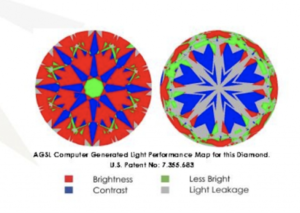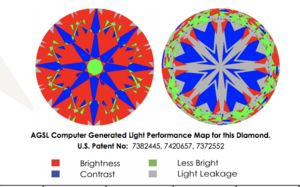I am trying to understand how to interpret an ASET scope on the hearts side and see if there's anything to be concerned about.
Looking at the AGS provided scope below, the two arrow scope looks great as they are both super ideal cut diamonds, but the included hearts scope is different as Hearts2 shows much more shade of greens. There isn't a lot of materials out there that talks has ideal asets for hearts and how important the scope on that side is, any suggestions would be welcomed.
Hearts1

Hearts2

Looking at the AGS provided scope below, the two arrow scope looks great as they are both super ideal cut diamonds, but the included hearts scope is different as Hearts2 shows much more shade of greens. There isn't a lot of materials out there that talks has ideal asets for hearts and how important the scope on that side is, any suggestions would be welcomed.
Hearts1

Hearts2




300x240.png)